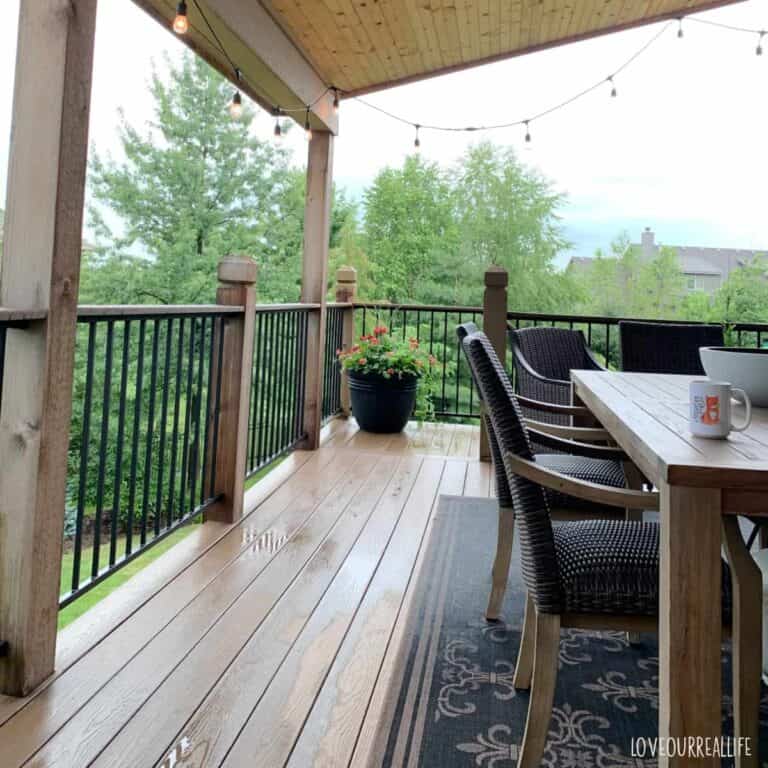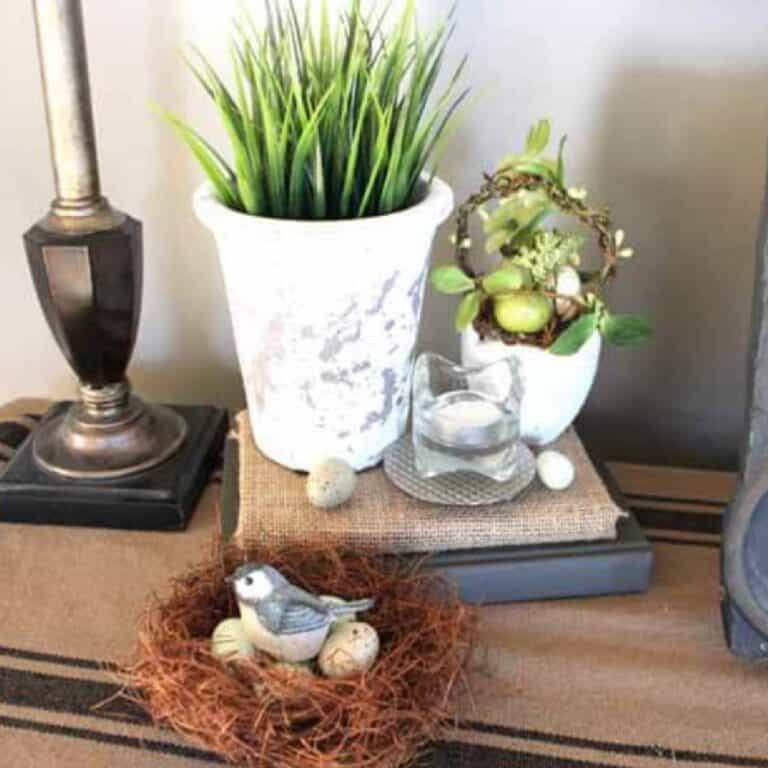How to Water and Care for Air Plants (8 Tips)
Tillandsia, more commonly known as air plants, are epiphytes — in their natural habitat, they grow on plants and trees. Unlike most plant species, air plants derive nutrients and moisture from the air surrounding them. These unique plants are found in Central and South America and in the southern United States.
Here are 8 ways to water and care for air plants:
- Water air plants with natural water sources.
- Keep your air plant in a proper container.
- Provide proper lighting.
- Ensure good air circulation.
- Give them the right fertilizer.
- Watch for signs of damage.
- Maintain humidity.
- Separate mother plants from babies.

Get more ideas for home decor and tips here.
There are many different varieties of air plants, and what they need may depend on the type of air plant you have. In this article, we’ll cover the main methods for caring for air plants, including watering, containers, lighting, air circulation, fertilizer, damage, humidity, and separating pups from the mother plant.
1. Water Air Plants With Natural Water Sources
Air plants need moisture to survive, but watering an air plant is different from watering soil-based plants.
Since the air in a home tends to be dry, it could be detrimental to an air plant that draws moisture from the atmosphere. Because of this, you need to water your plants regularly — and there’s a proper way to do so.
Do Air Plants Need Soil?
Air plants don’t need soil. Unlike other plants, which absorb nutrients and moisture from the soil, air plants get what they need from the air. A common misconception is that air plants survive on air alone. However, this is untrue. You must provide water, light, and proper air circulation.
Best Type of Water for Air Plants
The best water for air plants comes from natural sources — rainwater is ideal. The next best thing is natural spring water.
Other options include well water, pond water, and water from your aquarium.
Tap water isn’t recommended for air plants. Not only does it lack the nutrients and minerals needed for air plants to survive, but the harsh chemicals could harm the plant, causing build-up on its leaves.
If you must use tap water, let the water sit at room temperature for at least 24 hours. This allows chlorine and other chemicals to dissipate before watering your air plant.
Distilled water is fine, but you must add fertilizer when using it. Pure water contains fewer minerals, so supplementation is necessary. We’ll discuss air plant fertilizer more in-depth in step five.
How Often Should Air Plants Be Watered?
Water air plants at least once a week and up to two to three times a week. Give plants a long soak once a month for around twenty minutes to an hour. If you live in a dry, arid climate and have a Mesic Air Plant, you’ll need to water your plant more frequently. Xeric Air Plants require less water.
How Do I Know if My Air Plant Needs Water?
An air plant needs water if the sphagnum moss feels dry. Dunk or mist the plant to provide moisture. If the plant is severely underwatered, the leaves turn brown, begin curling inward, or feel hard and crispy when you touch them. Giving the plant a good soak is usually enough to revive it.
However, if the plant is slimy and gray, this is a sign of overwatering. An overwatered air plant is difficult to save. To learn more about air plant problems, check out step six in this post.

How Do You Water an Air Plant?
Water an air plant two to three times a week using a misting bottle. Ensure that the sphagnum moss is moist but not dripping wet. Once a month, soak the entire plant in a bucket or bowl of water for between twenty minutes to one hour. Only use water that is at room temperature.
While the easiest and most common method for watering air plants is spraying or misting, it doesn’t always provide the optimal amount of moisture. The soaking method once a month ensures that the plant doesn’t dry out quickly.
If you feel your plant needs more frequent watering, you can soak once a week instead of misting. Try soaking for different periods of time to see what works best for your plant.
Do You Soak Air Plants Upside Down?
It’s not necessary to soak air plants upside down. Float them in water right side up, and if they begin to sink, don’t worry. Don’t soak for more than an hour. Shake off excess water and place it upside down on a cloth to dry to ensure moisture doesn’t get trapped in the leaves.
2. Keep Your Air Plant in a Proper Container
These indoor plants need a proper container to ensure optimal health. The container shouldn’t restrict access to lighting or moisture, so it should be open. Additionally, you should have easy access to the plant to assess it for damage.
Where To Put Air Plants
There are dozens of different air plant containers on the market — you can even create your own! However, it’s important to ensure that the container is suitable for an air plant.
Below, we’ll cover four great container options for air plants:
- Glass Globes – One of the most popular containers for air plants is the glass globe. There’s usually a large opening in the front for easy access and misting. Glass doesn’t restrict light, and the globes are also aesthetically pleasing, such as the TQVAI Hanging Glass Globes (available on Amazon.com). Each comes with a string for hanging and is made of borosilicate glass.
- Driftwood – In their natural environment, air plants grow atop a host tree. You can recreate this habitat using driftwood. Attach sphagnum moss to a driftwood log, secure the air plant to the moss, and hang it on a wall or place it on a shelf. The SuperMoss Driftwood (available on Amazon.com) is 100 percent natural and organic and is 11-13 inches (27.94-33.02 cm) long.
- Shallow Bowl – Because air plants are rather small, shallow bowls are an ideal container choice. The HC Companies Planter Saucer (available on Amazon.com) comes in the colors “terra cotta” and “chocolate.” While it’s technically a drip tray, it’s ideal for air plants. Just add gravel, driftwood accents, and some sphagnum moss, and you’ll have a beautiful, decorative air plant habitat.
- Wall Planters – Need more wall decor but not sure what to add? Try wall planters! Air plants look incredible in these mounted planters, creating a beautiful addition to your home’s decor. The LESEN Metal Wall Planters (available on Amazon.com) come in a set of two. Hardware is included to mount these tin planters to your wall.
In addition to a proper container, air plants need warm temperatures between 50 and 90°F (10 and 32.22°C). Temperatures below 45°F (7.22°C) could harm your air plants. With that said, keep the air plant in a warm area.

3. Provide Proper Lighting
Because they grow on trees and other plants in the forest, most air plants are used to indirect sunlight.
Too much sun can cause leaf discoloration and may cause the plant to lose moisture and become brittle.
On the other hand, inadequate lighting can prevent proper growth and cause the leaves to lose their vivid green color.
To ensure that you’re providing adequate lighting, choose a bright, sunny area that’s not exposed to direct sunlight. The best option is a warm bedroom near a south-facing curtained window. Curtains filter the light, making it softer and less harsh.
If you don’t have access to a bright area, artificial lighting may be sufficient.
Consider using fluorescent bulbs or a full-spectrum LED light. A small, adjustable light such as the Yadoker Plant Grow Light (available on Amazon.com) will provide enough light for one or two air plants. The light attaches directly to the plant’s container.
4. Ensure Good Air Circulation
In addition to proper moisture, containers, and lighting, good air circulation is a must for air plants. Without good airflow, air plants are susceptible to mold, mildew, pests, crown rot, and other detrimental effects.
Keep these plants dry between waterings by using a small fan or placing them in a well-ventilated room.
Different locations in your home have better circulation than others. For example, a room with two windows and a ceiling fan is better for air plants than a closed-off bathroom.
5. Give Them the Right Fertilizer
When using rainwater, spring water, pond water, or aquarium water, you don’t need to fertilize your air plants. However, if you’re using tap water or distilled water, then fertilizing is a must.
Use a water-based fertilizer about once a month. While there are fertilizers designed explicitly for air plants, use all-around non-urea, low-nitrogen bromeliad fertilizer. We highly recommend The Grow Co Organic Bromeliad Plant Food (available on Amazon.com). This fertilizer provides the balanced nutrients that epiphytes need to thrive.
Use only a little fertilizer. Air plants are rather small, so they don’t need much! When diluting, only mix to half of the recommended amount. Mix it up in a spray bottle and spritz it lightly over your plant about once a month.
6. Watch for Signs of Damage
Keep your air plant happy and healthy by regularly checking for any worrisome signs.
Air plants are susceptible to rot, overwatering, underwatering, and brittle leaves. If you catch any problems early, you might be able to save the plant.
Every week, take a good look at your air plant. Look at the roots, leaves, and leaf tips. If you notice anything amiss — for example, gray, slimy roots, brittle leaves, or discoloration — you’ll need to figure out what’s wrong immediately.
Here are some signs of damage and how to fix them:
- Root Rot – Gray, slimy roots are a sign of root rot. To remedy this problem, remove the bad roots with garden shears and stop watering the plant so frequently.
- Crown Rot – For crown rot, you’ll notice squishy, brown leaves. Unfortunately, this condition is often fatal. You’ll need to toss the affected plant into the compost and replace it with a new, fresh plant (and new sphagnum moss).
- Underwatering – Brown spots, brown leaves, curling leaves, or leaves that feel “crunchy” are a sign of underwatering. Give the plant a good soak to help bring it back to life.
- Overwatering – It’s hard to save an overwatered air plant. However, you can attempt to rescue it by gently removing it from the sphagnum moss and replacing it with fresh, dry moss.
7. Maintain Humidity
There are two main types of air plants, each requiring specific humid conditions. These are:
- Mesic air plants live in a humid climate. Their native habitat is in South American forests, so naturally, they prefer more moisture. Additionally, they thrive in forests, so they prefer indirect light. These plants are darker, smoother, and don’t have as many trichomes. The leaves are slightly curled.
- Xeric air plants live in a drier environment. This type prefers desert-like climates and enjoys living on rocks or cliffs. They have more trichomes than mesic plants and prefer more light, and also need less frequent watering. Mist or dunk them from time to time instead of long soaks. Xeric air plants are bright green with a silver-like appearance and have an abundance of flat, fuzzy leaves (the “fuzz” is actually trichomes).
8. Separate Mother Plants From Babies
When properly cared for, air plants create one to three babies, or “pups,” after they bloom.
In the wild, the pups would continue to grow until the mother plant dies. If you don’t want the mother plant to die, you’ll need to remove the babies.
Gently remove the pups from the mother plant once they’re about ⅓ her size. Use sanitized garden shears to do so.
Key Takeaways
Entering the plant world is intimidating, especially when diving into indoor plant care. Air plants, however, are relatively low-maintenance plants and are fine for beginners.
The most important parts of maintaining a healthy air plant are to ensure that you meet their water needs, provide the proper container, offer good air circulation, give adequate lighting, fertilize when necessary, and provide the right humidity levels. Additionally, watch the plants for signs of damage.
Whether this is your first air plant or fiftieth, all you need to do is take good care of them. Hopefully, the care tips in this article help.
RELATED READING:





